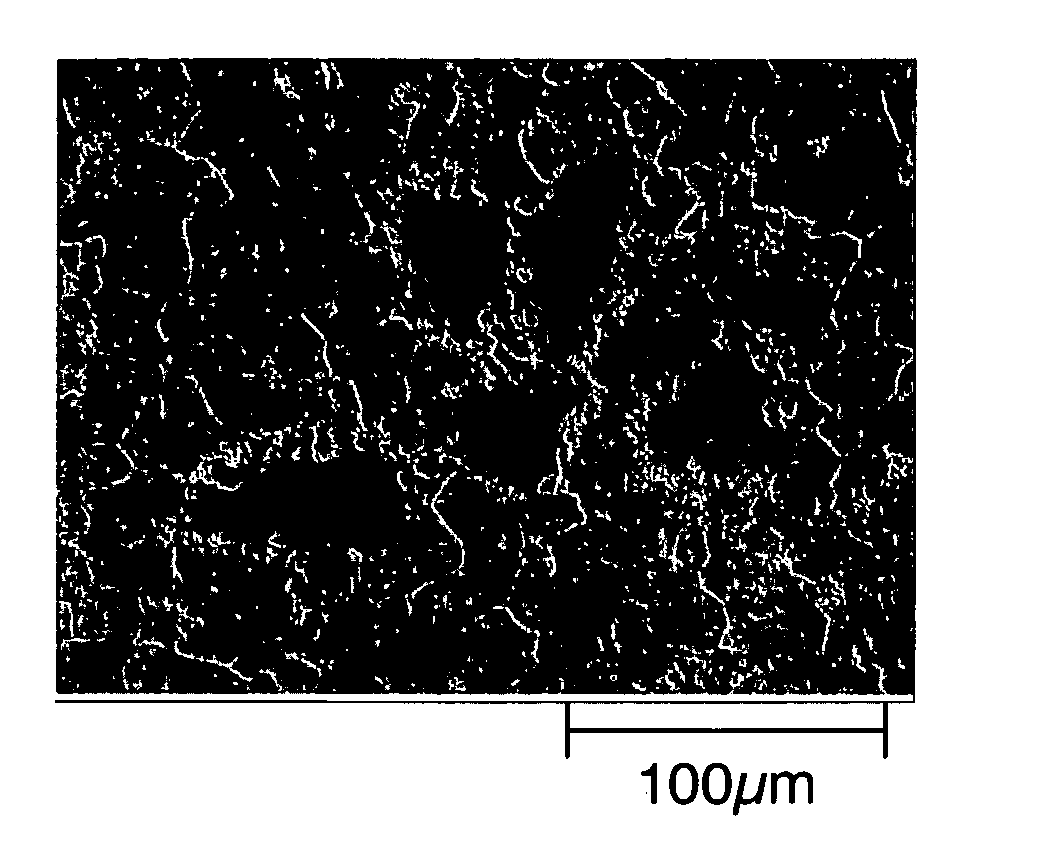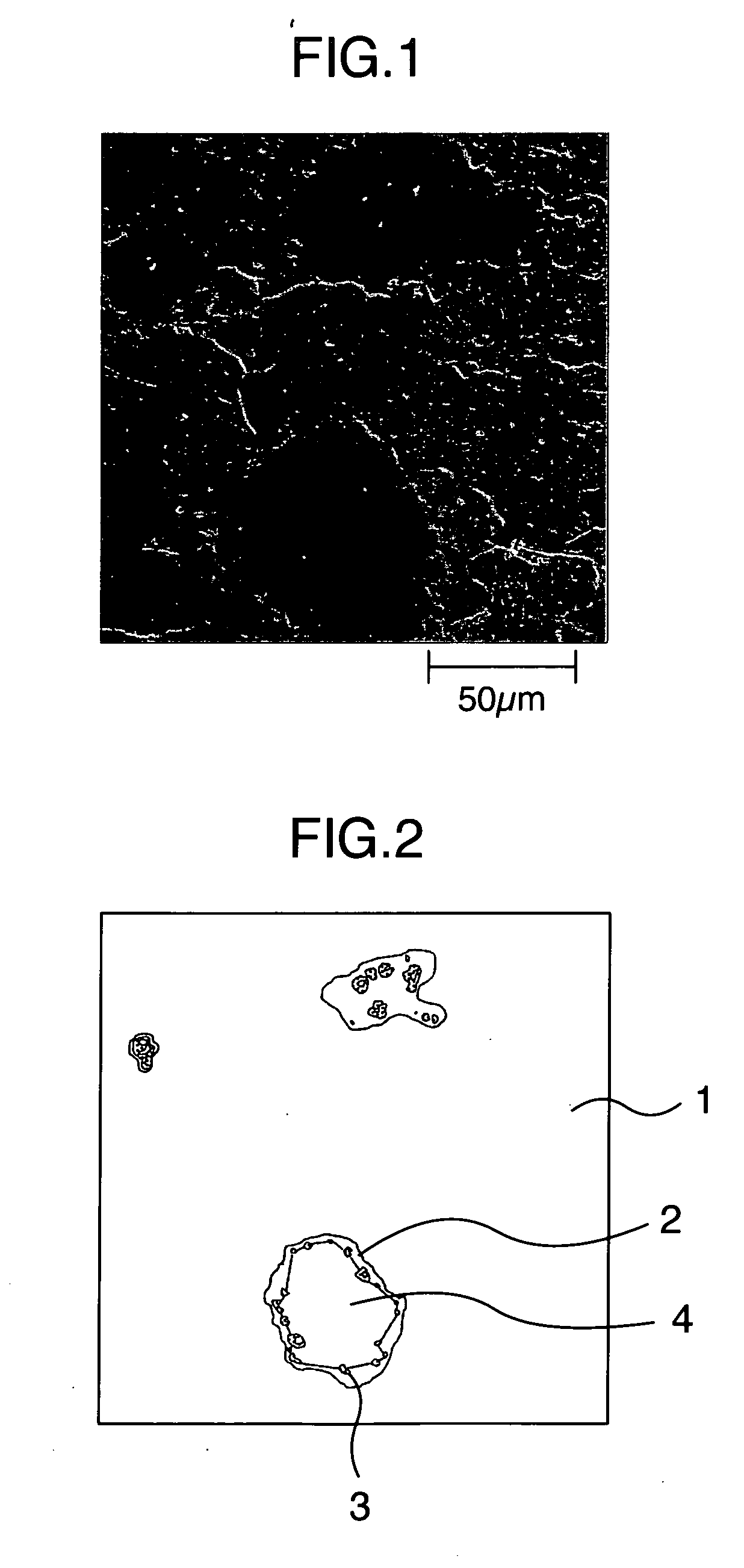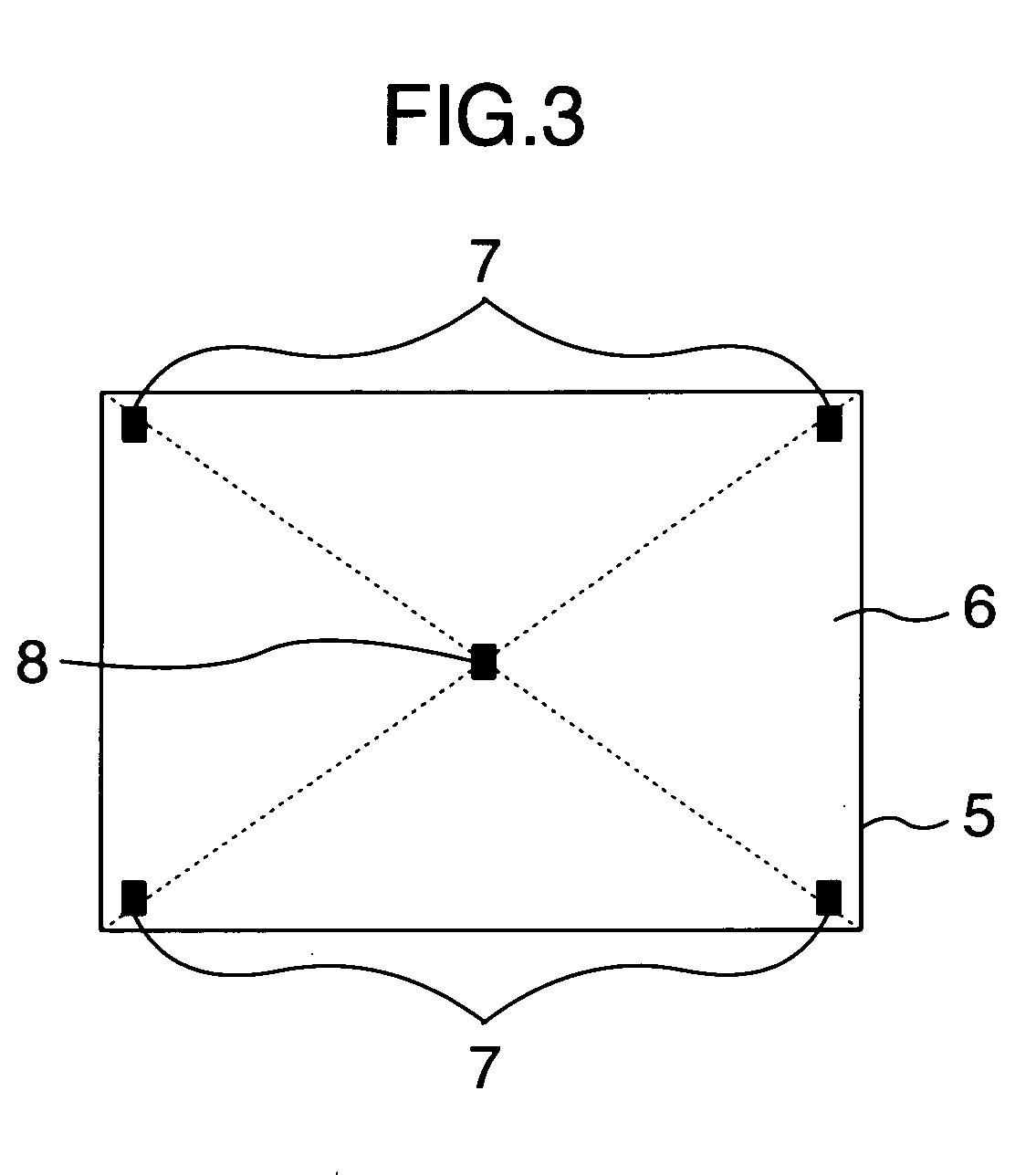Sputter target material and method of producing the same
a target material and sputtering technology, applied in the direction of diaphragms, metallic material coating processes, metal-working apparatuses, etc., can solve the problems of affecting affecting the work efficiency of plastics, and affecting the quality of plastics, etc., to achieve the effect of improving the workability of plastics
- Summary
- Abstract
- Description
- Claims
- Application Information
AI Technical Summary
Benefits of technology
Problems solved by technology
Method used
Image
Examples
example 1
[0048] There were prepared a Mo powder having an average particle size of 6 μm, a Nb powder having an average particle size of 100 μm, a Cr powder having an average particle size of 100 μm, a Ti powder having an average particle size of 100 μm, a Zr powder having an average particle size of 100 μm, and a V (vanadium) powder having an average particle size of 100 μm.
[0049] Invention Specimen Nos. 1 to 6 target materials shown in Table 1 were produced by the following process.
[0050] (1) In order to produce each of the specimens, given amounts in atomic % of the Mo powder and any one of the additive element powder were checkweighed.
[0051] (2) The checkweighed powders were blended for 10 minutes with utilization of a V-type blender to obtain a raw material powder.
[0052] (3) The raw material powder was compressed by a CIP machine to form a green compact.
[0053] (4) The green compact was pulverized with utilization of a jaw crusher and a disc mill to produce a secondary powder.
[0054]...
example 2
[0070] Sintered bodies, having the same chemical compositions and the same sizes as those produced in Example 1, respectively, were produced by the same manner as the case of Example 1, and subsequently subjected to hot rolling. The hot rolling after the HIP process was carried out for the respective sintered body, as contained in the pressurizing container without removing the container from the sintered body, such that a working process of heating up to a temperature of 1150° C. and rolling under a reduction ratio of not more than 50% was repeated five times. An aimed rolling reduction ratio was 25%. After hot rolling, the respective work was sliced and machined to obtain a sputter target material having a rectangular form and a measurement of a thickness of 10 mm, a width of 1130 mm and a length of 1200 mm. As in the case of Example 1, five test pieces were taken from each of the specimen sputtering target materials, each of which has a section perpendicular to the sputtering sur...
PUM
| Property | Measurement | Unit |
|---|---|---|
| surface area | aaaaa | aaaaa |
| side length | aaaaa | aaaaa |
| particle size | aaaaa | aaaaa |
Abstract
Description
Claims
Application Information
 Login to View More
Login to View More - R&D
- Intellectual Property
- Life Sciences
- Materials
- Tech Scout
- Unparalleled Data Quality
- Higher Quality Content
- 60% Fewer Hallucinations
Browse by: Latest US Patents, China's latest patents, Technical Efficacy Thesaurus, Application Domain, Technology Topic, Popular Technical Reports.
© 2025 PatSnap. All rights reserved.Legal|Privacy policy|Modern Slavery Act Transparency Statement|Sitemap|About US| Contact US: help@patsnap.com



